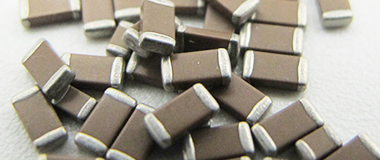WEET Metal Film Precision Resistors (MF) Features:
The MF series offers tight tolerances and low TCRs over a wide resistance range and are suitable for applications where long-term stability is paramount.
The MF is available in a resistance range of 10Ω to 1MΩ with a standard resistance tolerance of ±1%, and Precision to ±0.01%
Advantages of Metal Film Precision Resistors (MF)
1. Good heat resistance. The rated working temperature is 70 ℃, and the maximum working temperature can reach 155 ℃.
2. Good voltage stability and small temperature coefficient.
3. The operating frequency range is wide and the noise electromotive force is small, which can be used in high-frequency circuits.
4. Under the same power condition, it is much smaller than the carbon film resistor, about half of the carbon film resistor.
5. The precision resistance can be adjusted by cutting butterfly and pattern, and the precision tolerance can reach ± 0.1% and ± 0.01%.
6. The resistance range is very wide, and it can be made into a resistor of 1 Ω - 1M Ω.
7. Rated power includes 0.125W, 0.25W, 0.5W, 1W, 2W, 5W, etc.
8. The stability of pulse load is poor, not as good as that of carbon film resistor.
9. It is widely used in AC, DC and pulse circuits.
Metal Film Precision Resistors (MF) is coated on the surface of white porcelain rod with nickel chromium or similar alloy vacuum electroplating technology, and then cut to adjust the resistance to achieve the final required precision resistance.
Metal film resistors provide a wide range of resistance values, with the characteristics of precision resistance and small tolerance range.
Metal Film Precision Resistors (MF) can also be applied to metal film, fuse and resistor.
At present, carbon film resistors are widely used in electronics, electrical appliances and information products, with low price and high reliability.
It is formed by separating the carbon of organic compounds from high temperature and vacuum, tightly adhering to the carbon film on the surface of ceramic rod, cutting and adjusting it after proper joint, and coating the surface with epoxy resin for sealing.








